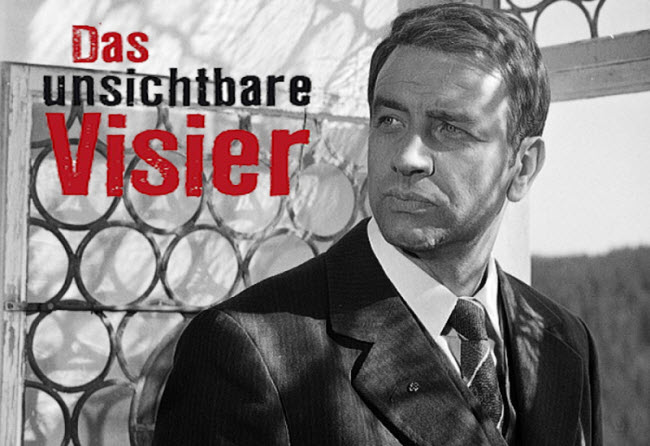The James Bond film series is one of the most famous franchises that explores the world of espionage and intelligence through the adventures of a British agent facing off against dangerous criminals and rival spies. Bond, often seen combating enemies from communist regimes, became a symbol of Western superiority during the Cold War. To counter this portrayal, the Eastern Bloc created their own spy hero in the form of Werner Bredebusch, a character from the East German TV series “The Invisible Mask” in the 1970s. Unlike Bond, Bredebusch was a communist spy who thwarted Western spies and saved his nation from their evil schemes.
“The Invisible Mask” aired between 1973 and 1979, with the main character, Werner Bredebusch, depicted as a secret agent working for the Stasi, the Ministry for State Security of East Germany. The Stasi was known for its rigorous surveillance methods, including phone tapping, blackmail, and a vast network of informants. The series showcased Stasi agents as Cold War heroes, defending East Germany from the malicious acts of its adversaries. This TV show was produced in a state-owned studio in East Germany to counter the rising underground popularity of James Bond films, which had secretly made their way into the country during the 1960s. The aim was to offer a different kind of visual entertainment to young viewers and to push back against the anti-communist messages found in Bond movies, which often depicted West Germany as a corrupt society obsessed with material wealth and filled with former Nazis.
Cinema and drama played a crucial role in the cultural battle between the Eastern and Western blocs during the Cold War. Before the production of “The Invisible Mask,” East German cinema in the 1960s had already started producing spy films known as “Reconnaissance Films.” These films depicted the protagonists as idealized East Germans who abstained from alcohol, were highly sociable, rejected Western influences like dance styles, and were portrayed as friends of the working class. Unlike James Bond, they wore ordinary clothes and interacted more closely with everyday people. Later, “The Invisible Mask” was released with opening credits and a theme song that mimicked the style of Bond films: a man walking slowly down a corridor as a black circle opens from the center of the screen, accompanied by similar background music.

Although “The Invisible Mask” was a propaganda show, it was well-crafted with a strong cast, led by actor Armin Mueller-Stahl, who played Werner Bredebusch in the first ten episodes. Mueller-Stahl later went on to Hollywood, featuring in films like “Shine” and “The Game.” The show also featured high-quality cinematography. However, as with most propaganda films, some scenes were unrealistic or absurd. For instance, some actors appeared in different episodes playing different roles. The first episode revolved around a mission assigned to Bredebusch to infiltrate a network of Nazis planning a coup in Argentina. He devises an extremely complex plan involving multiple identity changes, seducing Nazi intelligence officers, and discovering that monks in an Italian monastery are smuggling Nazis into South America. Upon reaching Argentina, Bredebusch performs an impressive dance with a woman who is supposed to be Argentine but is actually played by a German actress with poor makeup. In another episode, a CIA agent is seen attacking another agent outside a German castle while dressed in a ninja suit.

Alongside Werner Bredebusch, another character appears in the series: a good-looking agent named Alexander, who is fond of wearing brown shirts and is on the hunt for a villainous group planning to release and test nerve gas over a German city. Alexander is portrayed as an ordinary man working as a photographer for an advertising agency, taking pictures of beautiful women, with no one suspecting he is a spy. However, when needed, he uses his charm, combat skills, and espionage expertise to protect the people of East Germany from anyone who wants to harm them. In one episode, titled “King Kong Flu,” Alexander and the intelligence team track down a villain hiding in an apartment in Frankfurt. One night, Alexander sneaks into the apartment and, after a brief search, finds a suspicious bag in the fridge. Coincidentally, the enemy enters at the same moment, leading to a fight in which they exchange blows, ending with Alexander’s victory. It turns out the villain is not a terrorist but an American working as a CIA agent.

Throughout most of the episodes, the conflict with Western intelligence agencies was a recurring theme. In one episode, the agents confront NATO’s plans to start military unrest within the German Democratic Republic. In another, they discover apartheid-era South African weapons smuggled into the country with the help of the United States. In the final episode, Stasi agents, alongside Werner Bredebusch, attempt to stop the CIA’s plans to ignite fascist nationalist revolts in Greece, Turkey, and Italy.
